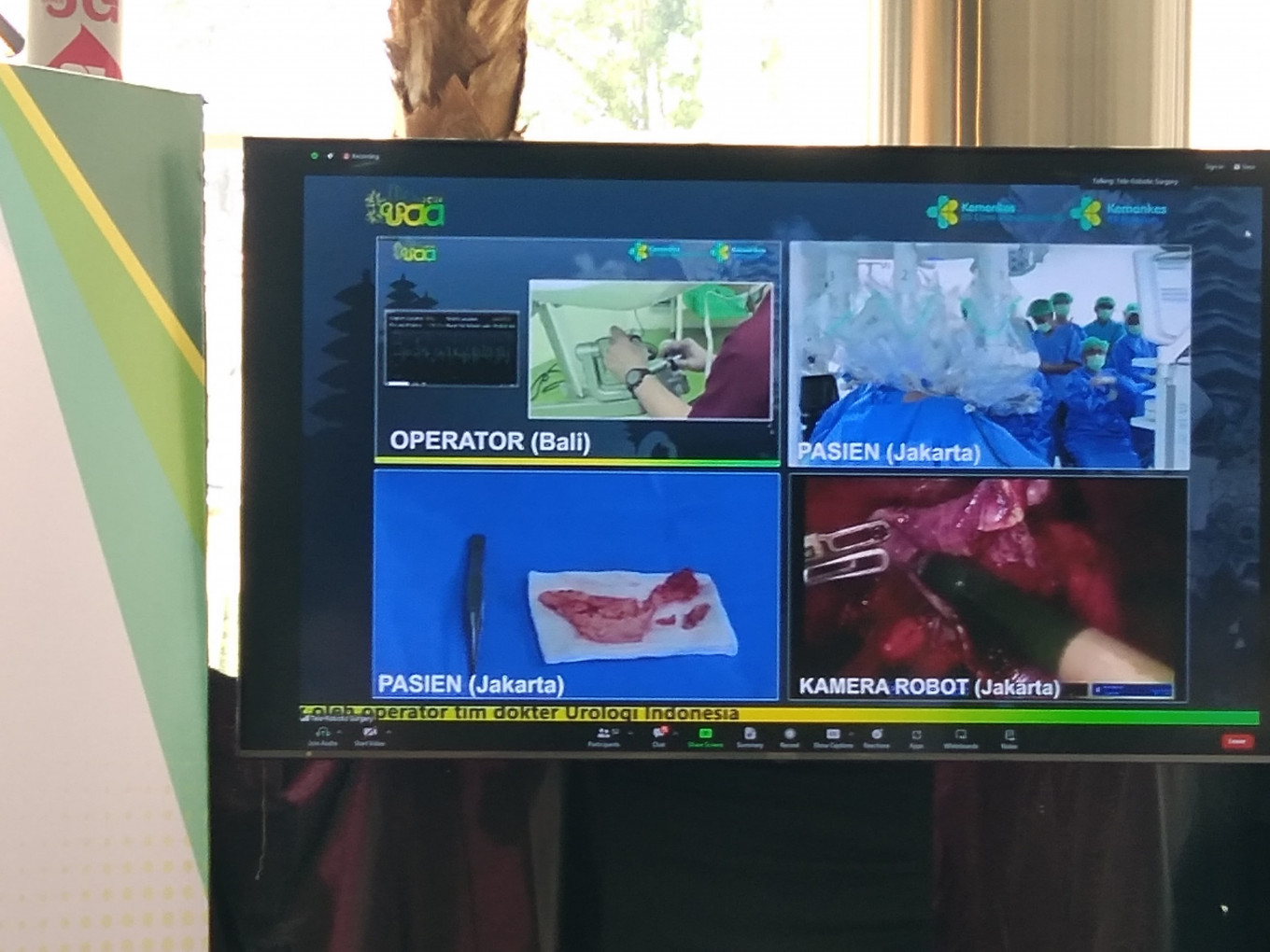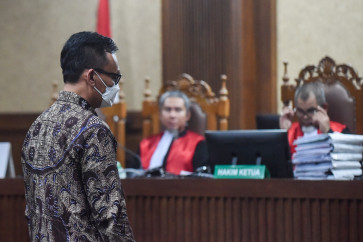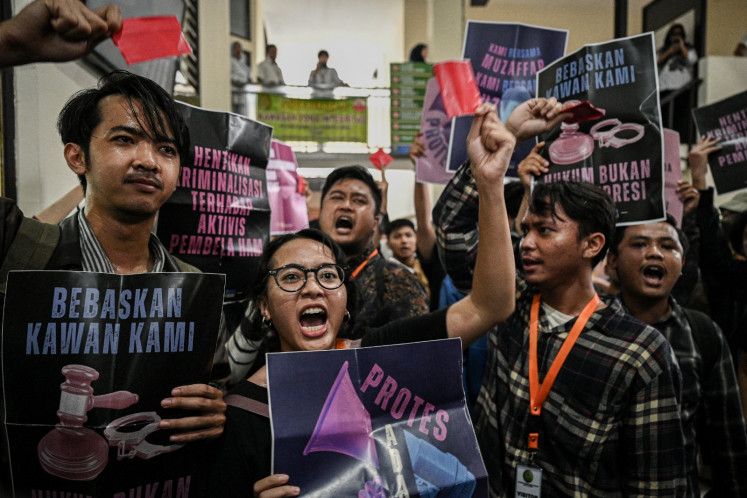Popular Reads
Top Results
Can't find what you're looking for?
View all search resultsPopular Reads
Top Results
Can't find what you're looking for?
View all search resultsRisky insurance reform
The primary motive behind the regulation is to ensure the financial sustainability of health insurers, who are struggling with rising claims amid soaring medical cost.
Change text size
Gift Premium Articles
to Anyone
 A screen at the lobby of Cipto Mangunkusumo Central General Hospital (RSCM) in Jakarta shows pictures of the telerobotic surgery to remove cyst from a patient's kidney on Aug. 30, 2024. The lead doctor in the procedure, urological surgeon Ponco Birowo, led the surgery from Denpasar, Bali, while the patient was in the surgical theater in Jakarta. (JP/Elly Burhaini Faizal )
A screen at the lobby of Cipto Mangunkusumo Central General Hospital (RSCM) in Jakarta shows pictures of the telerobotic surgery to remove cyst from a patient's kidney on Aug. 30, 2024. The lead doctor in the procedure, urological surgeon Ponco Birowo, led the surgery from Denpasar, Bali, while the patient was in the surgical theater in Jakarta. (JP/Elly Burhaini Faizal )
N
o one likes paying for something they once received for free. Unsurprisingly, a new regulation requiring health insurance policyholders to cover a portion of their treatment costs, expenses previously paid in full, has sparked a backlash from consumer advocacy groups and on social media.
The uproar followed the Financial Services Authority's (OJK) issuance of Circular No. 7/2025 on May 19. This regulation effectively bans health insurance plans that cover 100 percent of medical expenses. Starting Jan. 1, 2026, all new policies must include coinsurance, meaning patients will be required to pay at least 10 percent of their medical bills for both inpatient and outpatient care.
Existing policies will remain valid until expiration. However, plans that renew annually must comply with the new rules by the end of next year.
For example, a specialist check-up costing Rp 1 million (US$61.35), which your insurer might currently cover in full, will now require you to pay Rp 100,000 out of pocket. For patients relying on insurance for ongoing treatments like dental care, vision correction or pregnancy check-ups, this could create a significant financial burden over time.
The Indonesian Life Insurance Association (AAJI) has welcomed the change, calling it a necessary measure to reduce the financial strain on insurers. It notes that the OJK has capped out-of-pocket costs at Rp 300,000 per outpatient claim and Rp 3 million for inpatient claims, limits they believe will soften the impact on policyholders.
However, the Indonesian Consumers Foundation (YLKI) and the Indonesian Empowered Consumer Forum (FKBI) are not convinced. They argue the policy shifts too much financial responsibility to customers, prioritizing industry interests over public welfare.
The OJK itself admits that the primary motive behind the regulation is to ensure the financial sustainability of health insurers, who are struggling with rising claims amid soaring medical costs that often increase two to three times faster than general inflation. The regulator has also highlighted the issue of "moral hazard", where patients may seek unnecessary treatment when they do not share the cost, leading to higher claim payouts.
Critics, however, warn that the coinsurance requirement could discourage more Indonesians from purchasing health insurance, a serious concern in a country with worryingly low coverage, or increase the lapse rate as some policyholders may choose not to renew their plans.
In 2022, Indonesia's insurance penetration was just 1.4 percent, significantly below the global average of 6.8 percent, according to Swiss Re. ASEAN Insurance Council data show a similar trend, placing Indonesia's rate far below the Southeast Asian average of 3 percent and Singapore's 8.9 percent. Compounding this issue are high-profile scandals, such as the collapses of Jiwasraya and Bumiputera, which have eroded public trust.
The AAJI contends that coinsurance might be a blessing in disguise. It argues that the surge in claims, driven by high medical inflation, has forced insurers to raise premiums. Without coinsurance, they claim, premiums could become unaffordable for many. By reducing insurers' risk, the association believes coinsurance could help keep premiums lower, offsetting the additional burden on policyholders.
But there is a catch: No binding rule ensures that insurers will lower their premiums after the coinsurance mandate is implemented.
The OJK has taken a bold step to keep insurers afloat in the short term. In the long run, however, both the regulator and the industry must do more to convince Indonesians that an out-of-pocket share is in their best interest. They must also ensure that consumer rights are consistently protected, especially given past cases that resulted in significant losses for many policyholders.
Without a concerted effort to rebuild confidence and prevent future scandals, the coinsurance requirement risks leaving the industry stuck in the same low-penetration rut it has struggled with for years, or worse.










